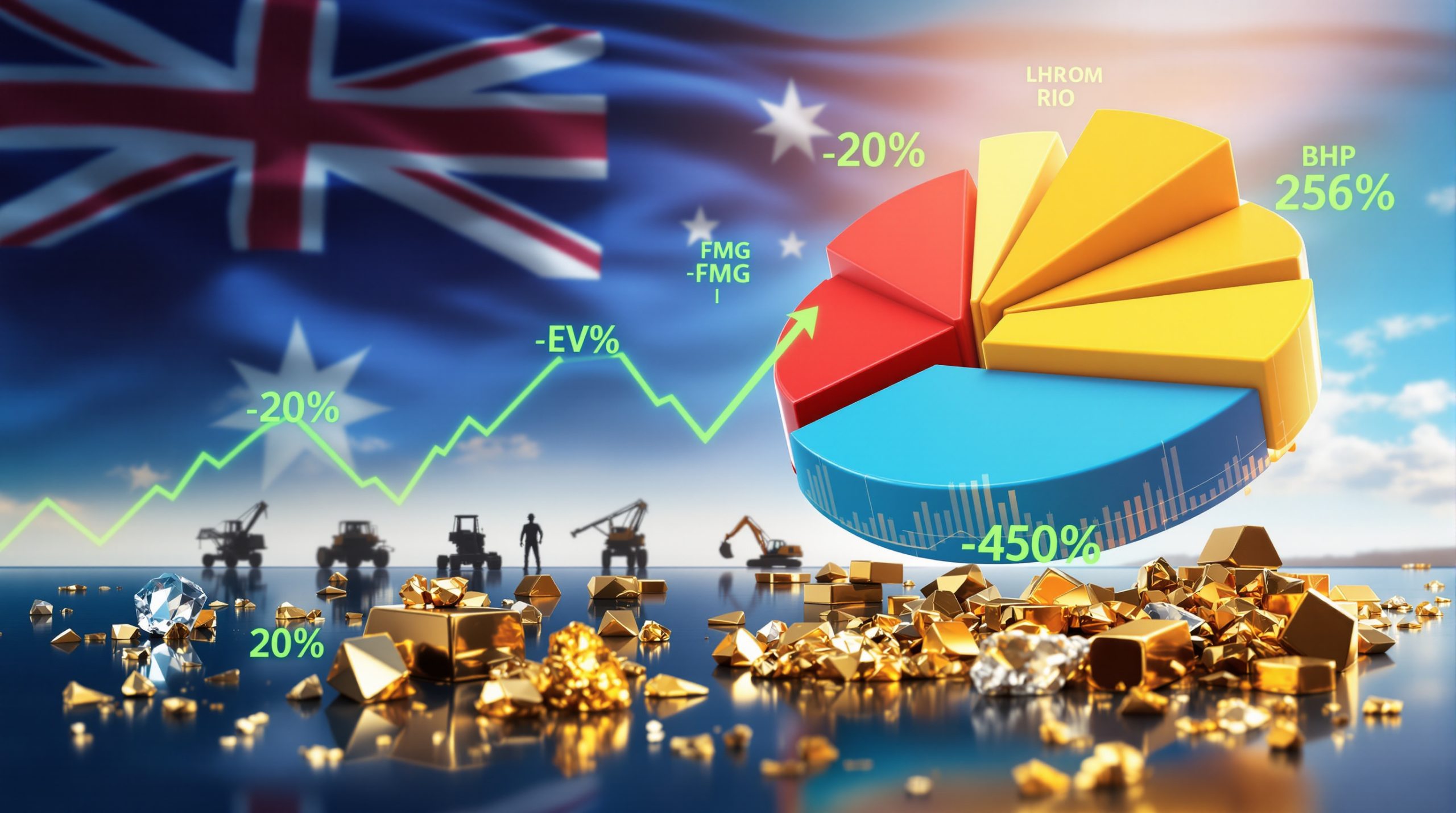What's Driving Central Bank Gold Acquisition?
The Shift from Sellers to Buyers
Central banks have undergone a remarkable transformation in their approach to gold holdings. Prior to the 2008 global financial crisis, central banks were predominantly net sellers of gold. However, this trend has dramatically reversed, with central banks now consistently purchasing gold at unprecedented rates.
The scale of central bank gold buying has reached historic proportions. According to recent World Gold Council data, central banks worldwide have accumulated gold in the past 12 months than at any point in modern financial history – a clear indication that something fundamental has shifted in how nations view this precious metal's role in their reserves.
"Since the global financial crisis, central banks have transitioned from net sellers to net buyers," notes precious metals expert Carrie Stevenson. "They've bought more in the past 12 months than ever before in comparable periods of recent decades."
Record-Breaking Purchase Volumes
This acceleration in central bank gold acquisition signals a fundamental reassessment of gold's role in national reserves and global financial stability. The volumes are unprecedented in modern history, with many nations quietly but consistently adding to their stockpiles month after month.
What makes this trend particularly notable is its persistence through various market conditions. Unlike previous periods of central bank buying, which often occurred in sporadic bursts, the current accumulation appears systematic and strategic across multiple jurisdictions.
Strategic Motivations Behind Acquisitions
This surge in central bank gold purchases reflects deeper strategic considerations beyond simple portfolio diversification:
- De-dollarization hedge: Many nations seek to reduce reliance on USD-denominated assets
- Sovereignty protection: Gold holdings can't be frozen or sanctioned like currency reserves
- Economic uncertainty buffer: Physical gold provides stability during financial turbulence
- Monetary system evolution: Preparation for potential changes in international settlement mechanisms
- Geopolitical risk management: Building resilience against regional conflicts and trade disputes
Perhaps most telling is which central banks are leading this gold acquisition trend. Nations across diverse economic systems and political alignments are simultaneously increasing their gold reserves, suggesting a convergence of thought regarding gold's strategic value in the current global landscape.
How Would Gold Function if the Dollar's Reserve Status Changed?
The Emergence of Alternative Trading Systems
While the complete displacement of the US dollar as the world's reserve currency appears unlikely in the immediate future, a gradual evolution toward a more diversified system is underway. Countries facing sanctions or seeking alternatives to dollar-denominated trade are increasingly exploring gold-based mechanisms for international commerce.
The $15 trillion in physical gold that exists globally represents an enormous untapped resource that could be integrated into evolving financial frameworks. This physical gold stockpile, when viewed against the backdrop of increasing currency creation, offers a compelling alternative for nations seeking stability in international trade.
"The weaponization of the US dollar through sanctions has accelerated the search for alternatives," explains Stevenson. "Nations now recognize that gold can function as a neutral settlement mechanism outside the traditional banking system."
Key Nations Leading the Shift
Three nations in particular are at the forefront of developing alternative financial frameworks:
-
China: Expanding the Shanghai Gold Exchange internationally while encouraging domestic gold ownership through both institutional and retail channels. China has also been retaining virtually all of its domestically mined gold since at least 2015.
-
Russia: Building substantial gold reserves while reducing dollar exposure, particularly following sanctions imposed after 2014. Russian energy exports are increasingly settled in alternative currencies and gold-based mechanisms.
-
Iran: Seeking gold-based alternatives to circumvent financial restrictions, having used gold for oil trades during periods of heightened sanctions. Iran's gold-for-goods programs demonstrate how physical precious metals can bypass traditional banking channels.
These nations aren't merely accumulating gold – they're actively developing the infrastructure necessary for gold to function in modern trade systems through technological innovations and bilateral agreements.
The Trust Factor in Currency Systems
The foundation of any currency system—including the US dollar's global dominance—rests on trust. As this trust experiences incremental erosion, alternative systems gain traction. The process typically unfolds gradually until reaching critical inflection points.
Historical precedent shows that monetary systems often appear stable until they suddenly aren't. The Bretton Woods system collapsed rapidly after decades of apparent stability, and similar trust-based systems have experienced comparable transitions throughout history.
What's different today is the technological infrastructure that could potentially enable gold to overcome its traditional limitations in international settlement. Digital gold platforms, blockchain verification systems, and improved logistics have removed many historical barriers to gold's utility in trade.
What Role Could Gold Play as Financial Collateral?
Beyond a Traditional Gold Standard
While a return to a classic gold standard appears improbable, gold's utility as collateral in international financial systems is gaining renewed attention. This represents a middle path between the current fiat-dominated system and a rigid gold standard.
"Gold won't replace fiat currencies outright," Stevenson observes, "but it will increasingly serve as the collateral underpinning international financial transactions, particularly between nations seeking alternatives to dollar-based systems."
The concept mirrors historical banking practices where gold reserves formed the foundation of fractional reserve systems. The modern implementation would likely leverage technology to verify and mobilize gold holdings efficiently across borders without physical transportation.
Factors Creating the "Perfect Storm" for Gold
Several concurrent global developments are creating favorable conditions for gold's expanded role:
- Geopolitical fragmentation: The multipolar world order increases demand for neutral settlement mechanisms
- Social instability concerns: Growing wealth inequality creates political pressures affecting monetary policy
- Sovereign debt crisis risks: The $37 trillion US national debt (and similar issues globally) creates structural instabilities
- Financial system vulnerability: Increasing complexity in derivatives markets heightens counterparty risks
- Monetary policy constraints: Central banks face limited options when addressing inflation without creating recession
These factors combine to create what Stevenson describes as a "perfect storm" for precious metals, as they represent one of few assets that cannot be created through monetary policy decisions.
The "Slowly, Then All at Once" Phenomenon
Financial system transformations often follow a pattern of gradual change followed by sudden acceleration. Ernest Hemingway's famous quote about bankruptcy happening "gradually, then suddenly" applies equally well to monetary system transitions.
"Follow the money flows… The case for gold strengthens when governments paper over problems by printing currency." – Carrie Stevenson
The current trajectory suggests we may be in the early stages of such a transition, making preventative positioning in precious metals potentially valuable as "financial insurance." History demonstrates that once monetary system changes accelerate, the opportunity to adjust portfolios advantageously often disappears rapidly.
How Will Technology Transform Gold's Utility?
Digital Gold vs. Physical Holdings
The emergence of digital gold platforms and blockchain-based precious metals solutions aims to address gold's traditional limitations—weight, security requirements, and transaction friction. However, these innovations serve primarily as complementary rather than replacement systems.
Digital platforms like Rush Gold now enable users to make everyday purchases using gold-backed payment systems. As Stevenson notes, "You can buy a coffee with gold-swept fiat through mobile applications that seamlessly convert precious metals to currency at point of sale."
This technological evolution transforms gold from a static store of value into a dynamic medium of exchange without sacrificing its core attributes of scarcity and independence from central bank creation.
Technology as an Enabler of Liquidity
The most promising technological applications focus on enhancing gold's usability and liquidity rather than replacing physical holdings. Several innovations are particularly noteworthy:
- Digital ownership certificates: Enabling fractional ownership and instant transfers
- Blockchain verification systems: Providing immutable records of authenticity and chain of custody
- Mobile payment integration: Allowing gold-backed transactions through existing point-of-sale systems
- Automated vaulting networks: Creating distributed physical storage with digital access controls
- Yield-generating platforms: Facilitating lending and leasing of precious metals holdings
These technologies address gold's historical limitations while preserving its fundamental characteristics. The result is an asset that combines the stability of physical gold with the convenience of digital currencies.
The Persistent Knowledge Gap
Despite technological advances, a significant knowledge barrier remains for potential precious metals investors. The industry often creates unnecessary complexity through:
- Overwhelming product variety (coins, bars, various sizes)
- Confusing pricing structures with variable premiums
- Technical terminology that intimidates newcomers
- Multiple purchase channels with varying legitimacy
- Competing storage solutions with different risk profiles
This complexity deters new participants and slows broader adoption of precious metals as financial tools. Educational initiatives that simplify these concepts are essential for expanding gold's role in personal financial planning beyond traditional investment circles.
What Would Happen if Major Mining Nations Restricted Exports?
Geographic Diversification of Supply
The global distribution of gold and silver in global trade provides natural resilience against single-country export restrictions. Unlike some critical minerals that face severe geographic concentration, precious metals production is spread across numerous jurisdictions.
Gold is mined on every continent except Antarctica, with major operations in Australia, Russia, the United States, Canada, Peru, South Africa, Mexico, Indonesia, Ghana, and Kazakhstan, among others. This geographic diversity makes coordinated supply restrictions highly unlikely.
Even regional export controls would likely trigger production increases in unaffected jurisdictions, moderating the price impact over time through market adjustments.
China's Domestic Gold Retention Strategy
China already implements a policy of retaining domestically mined gold while encouraging citizen ownership. Despite this significant producer removing its supply from international markets, global gold prices have remained relatively stable, demonstrating the market's adaptability.
"China has effectively implemented export restrictions on its domestic gold production since at least 2015," explains Stevenson, "yet the market has absorbed this supply reduction without dramatic price dislocations."
This real-world example provides valuable insight into how markets might respond to similar policies if adopted by other major producing nations. The gradual implementation has allowed for market adjustment without triggering panic buying or extreme price volatility.
The Mining Sector Valuation Disconnect
A notable disparity exists between physical gold prices and mining company valuations, particularly among development-stage companies. This presents potential opportunities for investors seeking leveraged exposure to precious metals price movements through carefully selected undervalued mining stocks.
Junior mining companies often trade at significant discounts to their resource valuations, creating situations where investors can effectively purchase gold in the ground at fractions of its market value. This disconnect persists despite improving fundamentals in many mining operations.
Factors contributing to this valuation gap include:
- Historical management missteps during previous bull markets
- ESG concerns affecting institutional investment mandates
- Capital intensity required for mine development
- Permitting and regulatory hurdles in many jurisdictions
- Competition from cryptocurrency and technology investments
For investors willing to accept higher volatility, this sector offers potentially substantial returns in scenarios where record high gold prices continue or even remain stable at current levels.
Why Are Precious Metals Relevant in Today's Economy?
The Fundamental Case for Precious Metals
The core argument for precious metals ownership remains unchanged: unlike fiat currencies that can be created through monetary policy decisions, gold and silver must be physically extracted through mining operations. This inherent scarcity provides a counterbalance to expansionary monetary policies.
"Gold must be mined, not printed," Stevenson emphasizes. "When central banks create currency to monetize debt, they're fundamentally altering the supply-demand dynamics of money itself, which strengthens the case for assets that exist outside that system."
Annual gold production adds approximately 1.5-2% to existing above-ground supplies, creating a stock-to-flow ratio that contrasts sharply with fiat currencies whose supply can be expanded indefinitely through policy decisions.
The Debt Dimension
The unprecedented global debt levels—particularly the $37 trillion US national debt—create structural pressures that historically favor precious metals. As governments worldwide continue to "paper over" financial challenges through currency creation, the case for holding assets that cannot be similarly created strengthens.
Historical analysis shows that precious metals typically perform well during periods of:
- High debt-to-GDP ratios
- Negative real interest rates
- Currency debasement
- Financial repression
- Systemic banking stress
Current economic conditions check multiple boxes on this list, creating an environment that has historically supported precious metals prices, particularly when measured against purchasing power rather than nominal currency values.
Balancing Portfolio Exposure
Financial experts increasingly recommend maintaining some precious metals exposure as part of a diversified portfolio. While extreme positions are generally discouraged, the absence of any precious metals allocation may leave investors vulnerable to monetary system disruptions.
Most balanced allocation models suggest 5-15% of investment portfolios be directed toward precious metals, depending on individual risk tolerance and geopolitical gold forecast outlooks. This moderate approach recognizes both the potential benefits and the volatility inherent in these assets.
"Precious metals serve as financial insurance rather than speculative vehicles. Their primary value comes from what they protect against, not necessarily what they might return in stable conditions."
This perspective frames gold and silver as defensive assets first and growth investments second – a crucial distinction for developing appropriate expectations about their role in comprehensive financial planning.
How to Navigate the Precious Metals Market Safely?
Avoiding Common Purchase Pitfalls
New precious metals buyers should exercise caution regarding purchase channels:
| Recommended Sources | Sources to Avoid |
|---|---|
| Established bullion dealers | Social media sellers |
| Major national mints | Online marketplaces (eBay, etc.) |
| Reputable local coin shops | Unverified websites |
| Bank precious metals programs | Private sellers without verification |
"The most common mistakes new buyers make involve purchase channels," Stevenson warns. "Reputable dealers employ multiple verification methods, while informal markets offer few protections against sophisticated counterfeits."
First-time buyers should prioritize dealer reputation over minor price advantages, as the risks associated with counterfeit products or unethical business practices far outweigh potential savings.
Price Awareness and Premium Considerations
Understanding the relationship between spot prices and retail premiums is essential for new buyers. Premiums vary significantly between products and dealers, with some consumer channels charging substantially above market rates for identical products.
Key premium considerations include:
- Product type: Coins typically carry higher premiums than bars
- Size factors: Smaller units generally have higher percentage premiums
- Brand influence: Recognized mints command price premiums
- Market conditions: Premiums expand during high-demand periods
- Purchase volume: Larger transactions often qualify for reduced premiums
Educational resources that explain these variables help new buyers make informed decisions rather than purchasing based solely on attractive marketing or misleading representations of value.
Authentication Concerns
The risk of counterfeit products makes purchasing through established channels particularly important. Sophisticated counterfeiting operations now produce fake products that pass visual inspection and even have similar weights to authentic items.
Professional dealers employ multiple verification methods:
- Electronic density testing
- Ultrasound thickness measurement
- X-ray fluorescence analysis
- Magnetic susceptibility verification
- Precision weight measurement
These technical market analysis procedures provide critical protection against increasingly sophisticated counterfeits entering the market, particularly from overseas manufacturing centers with advanced metallurgical capabilities.
FAQ: Gold and Silver in Global Trade
Will gold replace the US dollar as the world's reserve currency?
A complete replacement appears unlikely in the near term. Instead, we're witnessing the emergence of a more diversified system where gold plays an increasing role alongside major currencies, particularly in trade between nations seeking alternatives to dollar-denominated transactions.
The most probable outcome is a multi-currency reserve system with gold serving as a neutral settlement mechanism for certain international transactions, particularly between nations with complex geopolitical relationships.
How much gold do central banks currently hold?
Central banks collectively hold approximately 35,000 tonnes of gold, representing about 17% of all the gold ever mined. This percentage has been increasing as central banks have transitioned from net sellers to significant buyers over the past decade.
The distribution remains highly uneven, with Western nations generally holding larger reserves as a percentage of their total foreign exchange assets, while emerging economies are rapidly increasing their allocations from smaller historical bases.
Does blockchain technology make physical gold obsolete?
No. While blockchain and digital gold platforms enhance accessibility and transaction efficiency, they complement rather than replace physical holdings. Many investors maintain both physical metals for security and digital solutions for liquidity and convenience.
Blockchain solutions address specific limitations of physical gold, particularly in transaction speed and divisibility, but introduce their own unique risks related to cybersecurity, private key management, and regulatory uncertainty. The optimal approach for most investors combines both physical and digital exposure.
How do geopolitical tensions affect precious metals prices?
Geopolitical uncertainties typically drive increased demand for precious metals as safe-haven assets. Current global tensions across multiple regions create sustained support for gold and silver prices, particularly when combined with economic uncertainties.
The relationship is not always immediate or direct, as market participants may initially seek liquidity during crisis periods before repositioning toward safe-haven assets as situations stabilize. This pattern often creates delayed price responses to geopolitical developments.
What percentage of a portfolio should be allocated to precious metals?
Financial advisors typically recommend between 5-15% allocation to precious metals, depending on individual risk tolerance, investment goals, and economic outlook. This allocation serves primarily as a hedge against monetary system disruptions rather than as a primary growth vehicle.
Conservative investors might maintain positions at the lower end of this range, while those with greater concerns about financial system stability might justifiably allocate toward the upper end. Extreme allocations (below 3% or above 25%) are generally discouraged for most mainstream investors.
Ready to Spot the Next Major Mineral Discovery?
Stay ahead of the market with Discovery Alert's proprietary Discovery IQ model, which instantly identifies significant ASX mineral discoveries and transforms complex data into actionable investment insights. Visit our dedicated discoveries page to understand how major mineral discoveries can generate substantial returns and begin your 30-day free trial today.




